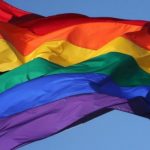- Blog #18 Til Brugman en Hannah Höch, 1926-1936 – by Rozemond Natter (in Dutch)
 Mijn naam is Rozemond Natter (2002, zij/haar) en ik ben derdejaarsstudent Fashion Design aan de Hogeschool voor de Kunsten in Utrecht. Mijn interessegebied is het breukvlak van beeldende kunst, mode, literatuur en gender. De rol van genderidentiteit en genderstereotypen in de mode fascineren mij, vooral aan het begin van de twintigste eeuw. Voor mijn creatieve… Read more: Blog #18 Til Brugman en Hannah Höch, 1926-1936 – by Rozemond Natter (in Dutch)
Mijn naam is Rozemond Natter (2002, zij/haar) en ik ben derdejaarsstudent Fashion Design aan de Hogeschool voor de Kunsten in Utrecht. Mijn interessegebied is het breukvlak van beeldende kunst, mode, literatuur en gender. De rol van genderidentiteit en genderstereotypen in de mode fascineren mij, vooral aan het begin van de twintigste eeuw. Voor mijn creatieve… Read more: Blog #18 Til Brugman en Hannah Höch, 1926-1936 – by Rozemond Natter (in Dutch) - Blog #17 The representation of bisexual women in Dutch lesbian periodicals 1980-1999 – by Mo Cramer


 This analysis looks at the representation and visibility of bisexual women in Dutch magazines aimed at women who love women during 1980-1999. In the United States, the debate about bisexual women in the lesbian community was widespread in the 1980s and 1990s. These tensions were also addressed in the lesbian press. A number of scholars… Read more: Blog #17 The representation of bisexual women in Dutch lesbian periodicals 1980-1999 – by Mo Cramer
This analysis looks at the representation and visibility of bisexual women in Dutch magazines aimed at women who love women during 1980-1999. In the United States, the debate about bisexual women in the lesbian community was widespread in the 1980s and 1990s. These tensions were also addressed in the lesbian press. A number of scholars… Read more: Blog #17 The representation of bisexual women in Dutch lesbian periodicals 1980-1999 – by Mo Cramer - Blog #16 Queering the narrative of ageing – by Nika Looman


 The Later-in-Life Intimacy project focuses on older women’s later in life experiences with regard to sexuality and intimacy. After (roughly) the age of 50, women are desexualized and seen as less sexually desirable than their younger counterparts. In media, older women are either absent or their sexuality is depicted as inappropriate. In academic research, we… Read more: Blog #16 Queering the narrative of ageing – by Nika Looman
The Later-in-Life Intimacy project focuses on older women’s later in life experiences with regard to sexuality and intimacy. After (roughly) the age of 50, women are desexualized and seen as less sexually desirable than their younger counterparts. In media, older women are either absent or their sexuality is depicted as inappropriate. In academic research, we… Read more: Blog #16 Queering the narrative of ageing – by Nika Looman - Blog #15 Queer Lifestyles; Queer Temporalities – by Andrés Ibarra Cordero


 In the humanities, queer theory scholars are currently engaged in an emerging discourse of “queer temporality”, their dialogue concerns the many ways in which the heterosexual (and thus, “hegemonic”) worldview has shaped the experiences and expectations of time. In attempting to imagine the queer temporal experience, this criticism explores and interprets alternative temporal orientations and… Read more: Blog #15 Queer Lifestyles; Queer Temporalities – by Andrés Ibarra Cordero
In the humanities, queer theory scholars are currently engaged in an emerging discourse of “queer temporality”, their dialogue concerns the many ways in which the heterosexual (and thus, “hegemonic”) worldview has shaped the experiences and expectations of time. In attempting to imagine the queer temporal experience, this criticism explores and interprets alternative temporal orientations and… Read more: Blog #15 Queer Lifestyles; Queer Temporalities – by Andrés Ibarra Cordero - Blog #14 Queering Sexual Abuse (III): The Impact on T+ Survivors – by Lindsay Sayer


 Why are LGBTQ+ people more likely to be sexually assaulted, harassed, and abused then cisgender and heterosexual people (Florez)? During this blogpost series, the ways in which LGBTQ+ people are vulnerable to sexual abuse and the impact it has on their general wellbeing will be uncovered. This is the last post in a series of… Read more: Blog #14 Queering Sexual Abuse (III): The Impact on T+ Survivors – by Lindsay Sayer
Why are LGBTQ+ people more likely to be sexually assaulted, harassed, and abused then cisgender and heterosexual people (Florez)? During this blogpost series, the ways in which LGBTQ+ people are vulnerable to sexual abuse and the impact it has on their general wellbeing will be uncovered. This is the last post in a series of… Read more: Blog #14 Queering Sexual Abuse (III): The Impact on T+ Survivors – by Lindsay Sayer - Blog #13 Religiously motivated hate speech against LGBTIQ+ people (III) – by Tegan Snyman


 Before I get into the third installment of this series, I’d like to do a brief recap. So far, we’ve spoken (I’ve written, you’ve read) about international human rights law (IHRL) with specific focus on the right to freedom of expression, the right to manifest religion, and their potential overlap with hate speech regulation. In… Read more: Blog #13 Religiously motivated hate speech against LGBTIQ+ people (III) – by Tegan Snyman
Before I get into the third installment of this series, I’d like to do a brief recap. So far, we’ve spoken (I’ve written, you’ve read) about international human rights law (IHRL) with specific focus on the right to freedom of expression, the right to manifest religion, and their potential overlap with hate speech regulation. In… Read more: Blog #13 Religiously motivated hate speech against LGBTIQ+ people (III) – by Tegan Snyman - Blog #12 Queering Sexual Abuse (II): The Impact on Bi+ Survivors – by Lindsay Sayer


 Why are LGBTQ+ people more likely to be sexually assaulted, harassed, and abused then cisgender and heterosexual people (Florez)? During this blogpost series, the ways in which LGBTQ+ people are vulnerable to sexual abuse and the impact it has on their general wellbeing will be uncovered. This post will be focusing on the impacts and… Read more: Blog #12 Queering Sexual Abuse (II): The Impact on Bi+ Survivors – by Lindsay Sayer
Why are LGBTQ+ people more likely to be sexually assaulted, harassed, and abused then cisgender and heterosexual people (Florez)? During this blogpost series, the ways in which LGBTQ+ people are vulnerable to sexual abuse and the impact it has on their general wellbeing will be uncovered. This post will be focusing on the impacts and… Read more: Blog #12 Queering Sexual Abuse (II): The Impact on Bi+ Survivors – by Lindsay Sayer - Blog #11 Queering Sexual Abuse: The Impact on Lesbian and Gay Survivors – by Lindsay Sayer


 Why are LGBTQ+ people more likely to be sexually assaulted, harassed, and abused then cisgender and heterosexual people (Florez)? During this blogpost series, the ways in which LGBTQ+ people are vulnerable to sexual abuse and the impact it has on their general wellbeing will be uncovered. This first post focuses on the impacts and vulnerabilities… Read more: Blog #11 Queering Sexual Abuse: The Impact on Lesbian and Gay Survivors – by Lindsay Sayer
Why are LGBTQ+ people more likely to be sexually assaulted, harassed, and abused then cisgender and heterosexual people (Florez)? During this blogpost series, the ways in which LGBTQ+ people are vulnerable to sexual abuse and the impact it has on their general wellbeing will be uncovered. This first post focuses on the impacts and vulnerabilities… Read more: Blog #11 Queering Sexual Abuse: The Impact on Lesbian and Gay Survivors – by Lindsay Sayer - Blog #10 Religiously motivated hate speech against LGBTIQ+ people (II) – by Tegan Snyman


 Last time I wrote about how “hate speech” is nowhere found in international human rights law (“IHRL”). I did that in order to clarify that when one considers how IHRL may regulate hate speech, it will have to be done through an interpretation of what is found in human rights treaties, rather than a specific… Read more: Blog #10 Religiously motivated hate speech against LGBTIQ+ people (II) – by Tegan Snyman
Last time I wrote about how “hate speech” is nowhere found in international human rights law (“IHRL”). I did that in order to clarify that when one considers how IHRL may regulate hate speech, it will have to be done through an interpretation of what is found in human rights treaties, rather than a specific… Read more: Blog #10 Religiously motivated hate speech against LGBTIQ+ people (II) – by Tegan Snyman - Blog #9 Religiously motivated hate speech against LGBTIQ+ people – by Tegan Snyman


 How often have you heard something described as “hate speech”? Be it in a viral online article, in a conversation amongst friends, or yelled, during news coverage, by someone describing what another person – often their polar opposite – had said. There are a multitude of definitions, and factors related to those definitions, for hate… Read more: Blog #9 Religiously motivated hate speech against LGBTIQ+ people – by Tegan Snyman
How often have you heard something described as “hate speech”? Be it in a viral online article, in a conversation amongst friends, or yelled, during news coverage, by someone describing what another person – often their polar opposite – had said. There are a multitude of definitions, and factors related to those definitions, for hate… Read more: Blog #9 Religiously motivated hate speech against LGBTIQ+ people – by Tegan Snyman - Blog #8 An Academic Review – but from a student: Feminist Epistemologies – by Jang Kapgen


 Just to keep all the gender philosophers and queer theorists from nitpicking this review, this piece is actually written by a student. You may be wondering now: Why should I care about a student’s review? The answer is as easy as obvious: Because most people are no philosophers or gender theorists. However, contemporary academic concepts… Read more: Blog #8 An Academic Review – but from a student: Feminist Epistemologies – by Jang Kapgen
Just to keep all the gender philosophers and queer theorists from nitpicking this review, this piece is actually written by a student. You may be wondering now: Why should I care about a student’s review? The answer is as easy as obvious: Because most people are no philosophers or gender theorists. However, contemporary academic concepts… Read more: Blog #8 An Academic Review – but from a student: Feminist Epistemologies – by Jang Kapgen - Blog #7 | Banning LGBTQ+ Content in the Russian Media: Fear and Concealment in an Anti-Queer Society – by Jasmijn ter Haar


 In the blogpost series “Banning LGBTQ+ Content in the Russian Media”, the censorship of LGBTQ-related media content in Russia and its implications are studied. The blogposts are based on this thesis (in Dutch), in which more extensive research on this topic can be found. In this third blogpost, a microlevel approach is taken to explore… Read more: Blog #7 | Banning LGBTQ+ Content in the Russian Media: Fear and Concealment in an Anti-Queer Society – by Jasmijn ter Haar
In the blogpost series “Banning LGBTQ+ Content in the Russian Media”, the censorship of LGBTQ-related media content in Russia and its implications are studied. The blogposts are based on this thesis (in Dutch), in which more extensive research on this topic can be found. In this third blogpost, a microlevel approach is taken to explore… Read more: Blog #7 | Banning LGBTQ+ Content in the Russian Media: Fear and Concealment in an Anti-Queer Society – by Jasmijn ter Haar - Blog #6 | Banning LGBTQ+ Content in the Russian Media: Delimiting the Mediated Space of Appearance – by Jasmijn ter Haar


 In the blogpost series “Banning LGBTQ+ Content in the Russian Media”, the censorship of LGBTQ-related media content in Russia and its implications are studied. The blogposts are based on this thesis (in Dutch), in which more extensive research on this topic can be found. In this second blogpost, a mesolevel approach is taken to explore… Read more: Blog #6 | Banning LGBTQ+ Content in the Russian Media: Delimiting the Mediated Space of Appearance – by Jasmijn ter Haar
In the blogpost series “Banning LGBTQ+ Content in the Russian Media”, the censorship of LGBTQ-related media content in Russia and its implications are studied. The blogposts are based on this thesis (in Dutch), in which more extensive research on this topic can be found. In this second blogpost, a mesolevel approach is taken to explore… Read more: Blog #6 | Banning LGBTQ+ Content in the Russian Media: Delimiting the Mediated Space of Appearance – by Jasmijn ter Haar - Blog #5 | Banning LGBTQ+ Content in the Russian Media: The Anti-Gay Propaganda Law – by Jasmijn ter Haar


 In the blogpost series “Banning LGBTQ+ Content in the Russian Media”, the censorship of LGBTQ-related media content in Russia and its implications are studied. The blogposts are based on this thesis (in Dutch), in which more extensive research on this topic can be found. In this first blogpost, a macrolevel approach is taken to explore… Read more: Blog #5 | Banning LGBTQ+ Content in the Russian Media: The Anti-Gay Propaganda Law – by Jasmijn ter Haar
In the blogpost series “Banning LGBTQ+ Content in the Russian Media”, the censorship of LGBTQ-related media content in Russia and its implications are studied. The blogposts are based on this thesis (in Dutch), in which more extensive research on this topic can be found. In this first blogpost, a macrolevel approach is taken to explore… Read more: Blog #5 | Banning LGBTQ+ Content in the Russian Media: The Anti-Gay Propaganda Law – by Jasmijn ter Haar - Blog #4 | When LGBTQ+ Adolescents Date – by Wouter Kiekens


 After Tinder was introduced in 2012, (online) dating has changed drastically. Because of the widespread availability of dating apps, going on dates or seeking hookups is just one swipe away. Some dating apps specifically target the LGBTQ+ community, with the most (in)famous gay dating app being Grindr. Other LGBTQ+ dating apps have emerged over the… Read more: Blog #4 | When LGBTQ+ Adolescents Date – by Wouter Kiekens
After Tinder was introduced in 2012, (online) dating has changed drastically. Because of the widespread availability of dating apps, going on dates or seeking hookups is just one swipe away. Some dating apps specifically target the LGBTQ+ community, with the most (in)famous gay dating app being Grindr. Other LGBTQ+ dating apps have emerged over the… Read more: Blog #4 | When LGBTQ+ Adolescents Date – by Wouter Kiekens - Blog #3 | On LGBTIQA+-inclusive higher education in times of COVID-19 – by Maaike Muntinga


 Dear students, Bet you didn’t think about Corona when you bought that ‘The future is queer’ t-shirt. You imagined a 2020 of Marches and Milkshakes, not a digital mint tea in old sweatpants. But here you are, queerantining with housemates, lover(s), or alone. Counting the centimeters every time you run into another human in the… Read more: Blog #3 | On LGBTIQA+-inclusive higher education in times of COVID-19 – by Maaike Muntinga
Dear students, Bet you didn’t think about Corona when you bought that ‘The future is queer’ t-shirt. You imagined a 2020 of Marches and Milkshakes, not a digital mint tea in old sweatpants. But here you are, queerantining with housemates, lover(s), or alone. Counting the centimeters every time you run into another human in the… Read more: Blog #3 | On LGBTIQA+-inclusive higher education in times of COVID-19 – by Maaike Muntinga - Blog #2 | Not on Each Other’s Backs – by Mirjam M. Fischer


 The power of the mainstream Regardless whether we think acceptance by the mainstream is something desirable or not, mainstream society’s view on sexual and gender diversity make a difference for LGBTQI* people’s daily lived experience. In my work, I show that the level of tolerance – that is, not even an embracing of sexual diversity… Read more: Blog #2 | Not on Each Other’s Backs – by Mirjam M. Fischer
The power of the mainstream Regardless whether we think acceptance by the mainstream is something desirable or not, mainstream society’s view on sexual and gender diversity make a difference for LGBTQI* people’s daily lived experience. In my work, I show that the level of tolerance – that is, not even an embracing of sexual diversity… Read more: Blog #2 | Not on Each Other’s Backs – by Mirjam M. Fischer - NEW | Research blog #1 – first contribution by Laura Baams: LGBTQ Youth in Quarantine


 “We have to challenge ourselves to think of how to support people in environments where they feel unsafe”1 These are challenging times for the lesbian, gay, bisexual, transgender, queer, and questioning (LGBTQ) community. LGBTQ youth experience more depression, more anxiety, and more suicidality than their heterosexual, cisgender peers.2 And it is not surprising that this… Read more: NEW | Research blog #1 – first contribution by Laura Baams: LGBTQ Youth in Quarantine
“We have to challenge ourselves to think of how to support people in environments where they feel unsafe”1 These are challenging times for the lesbian, gay, bisexual, transgender, queer, and questioning (LGBTQ) community. LGBTQ youth experience more depression, more anxiety, and more suicidality than their heterosexual, cisgender peers.2 And it is not surprising that this… Read more: NEW | Research blog #1 – first contribution by Laura Baams: LGBTQ Youth in Quarantine

